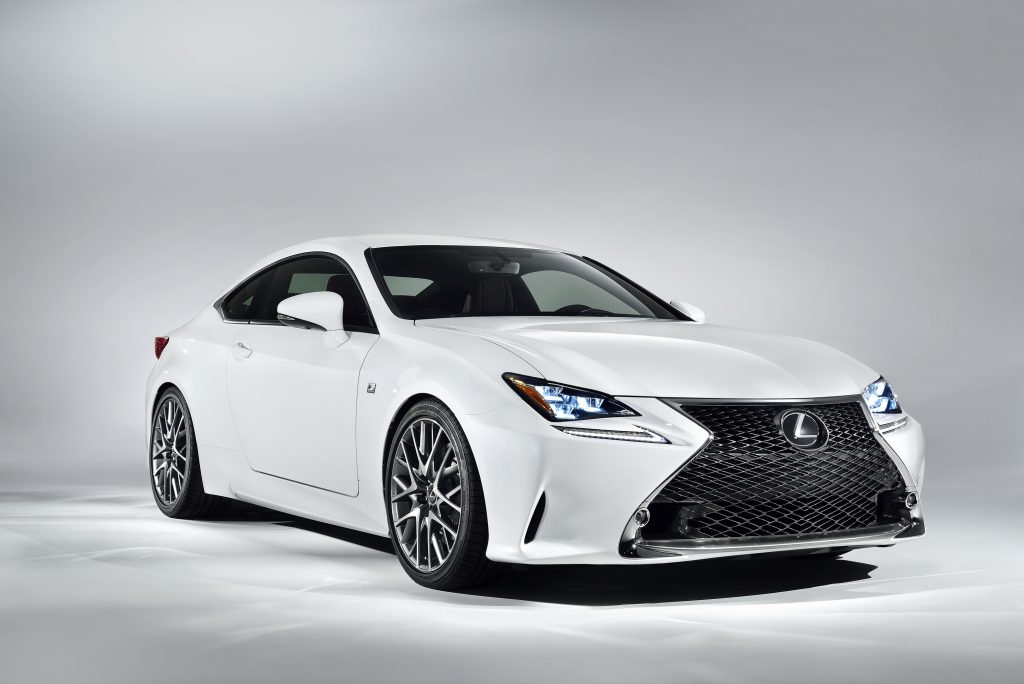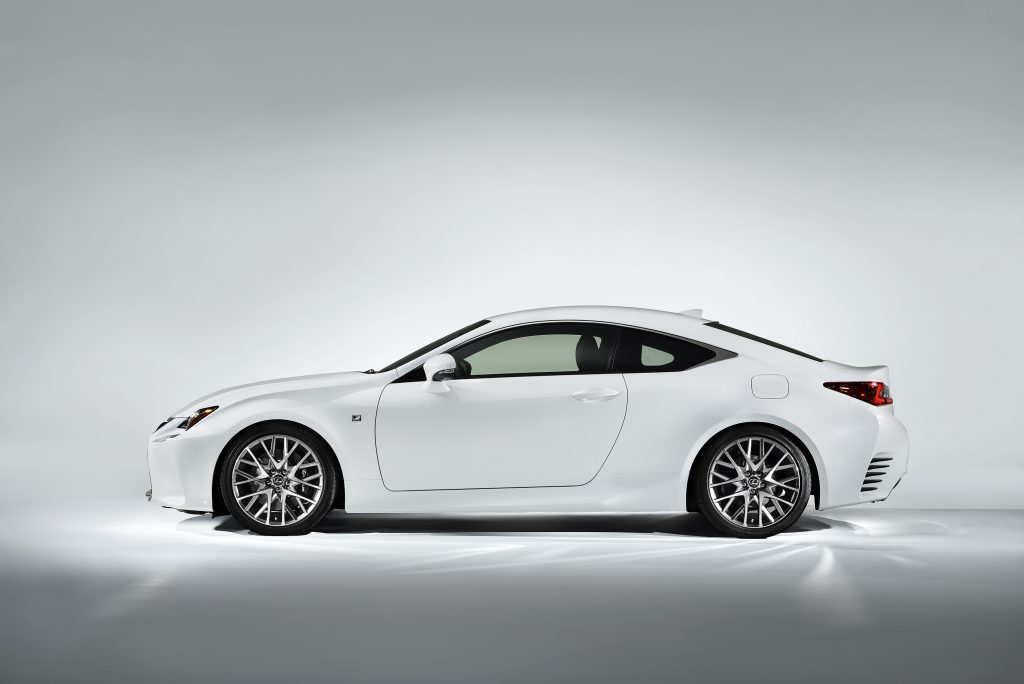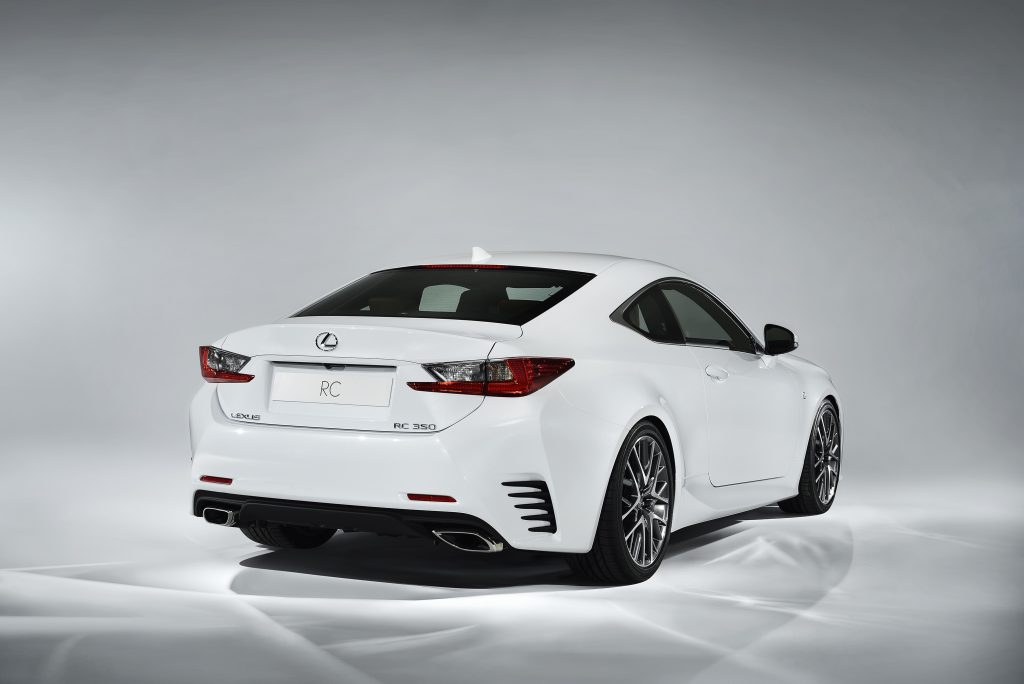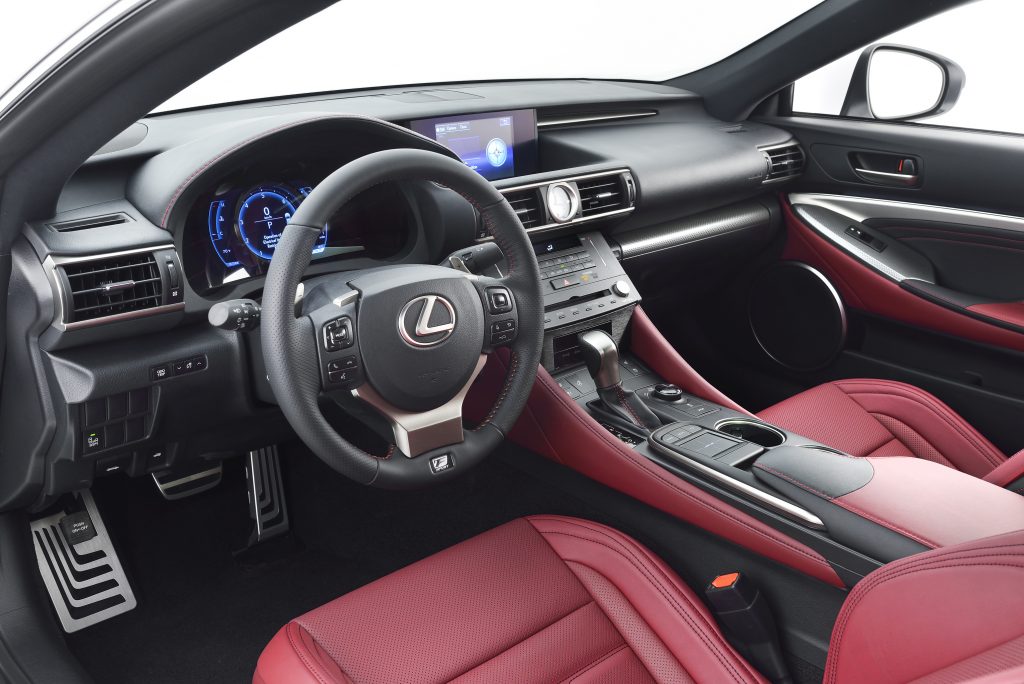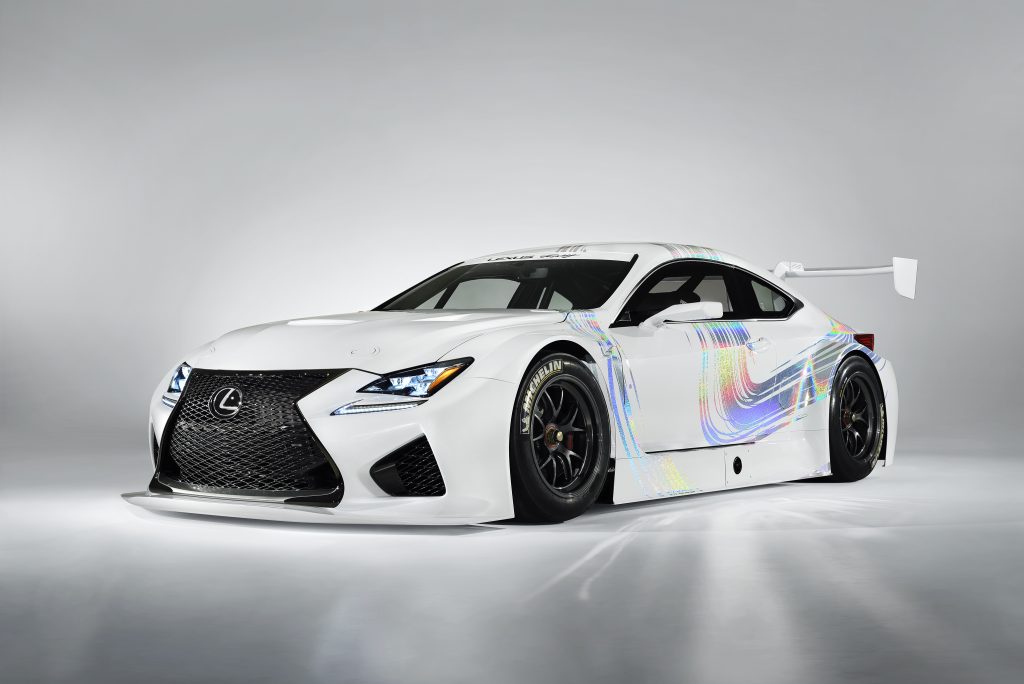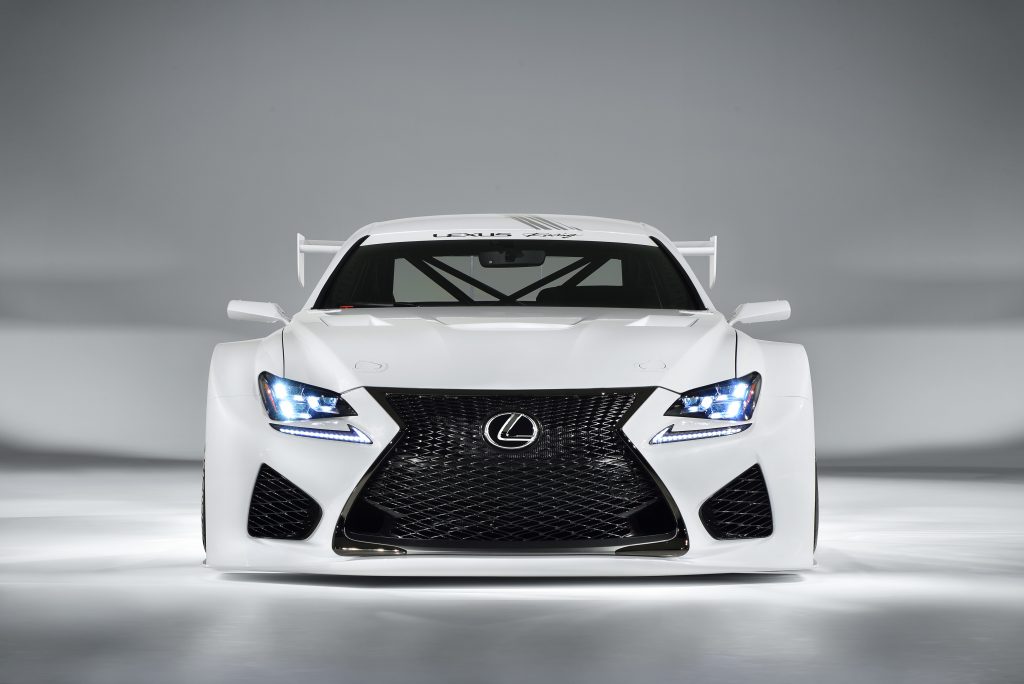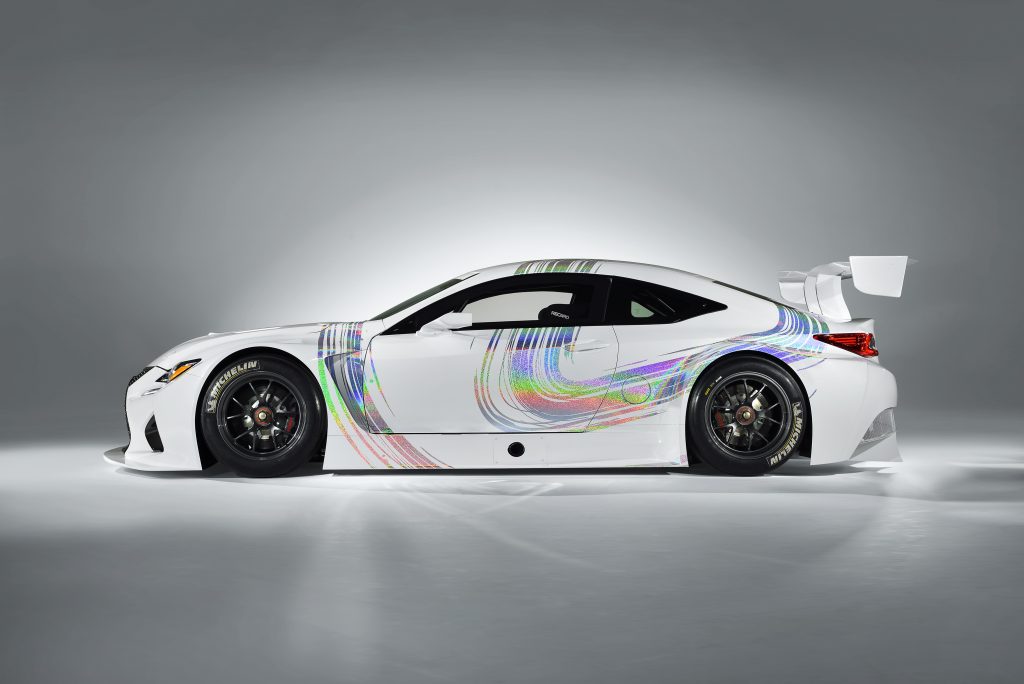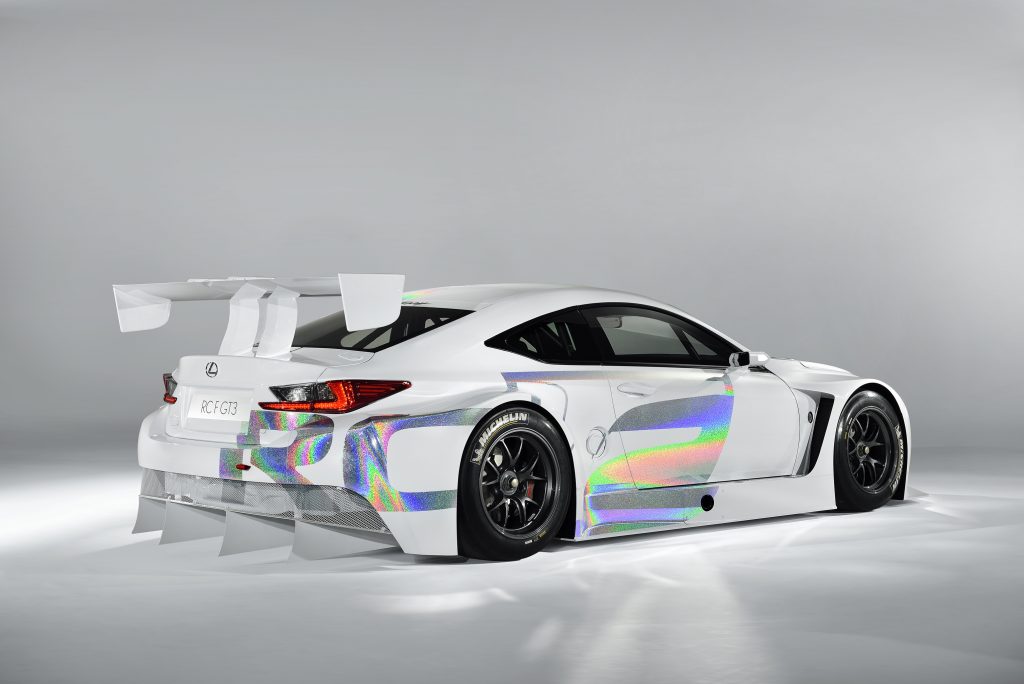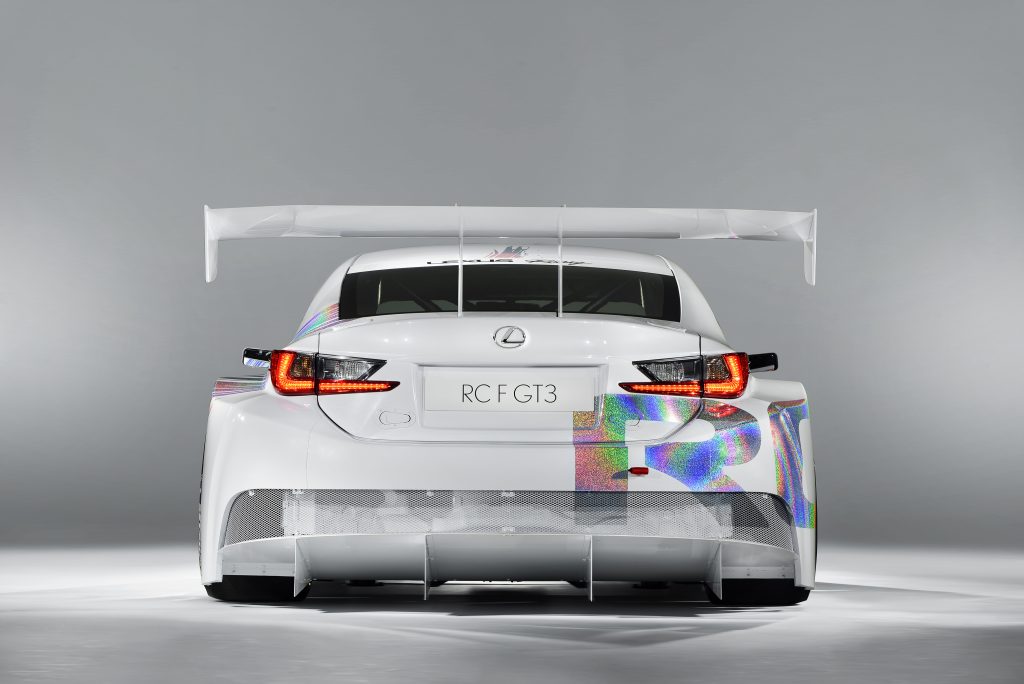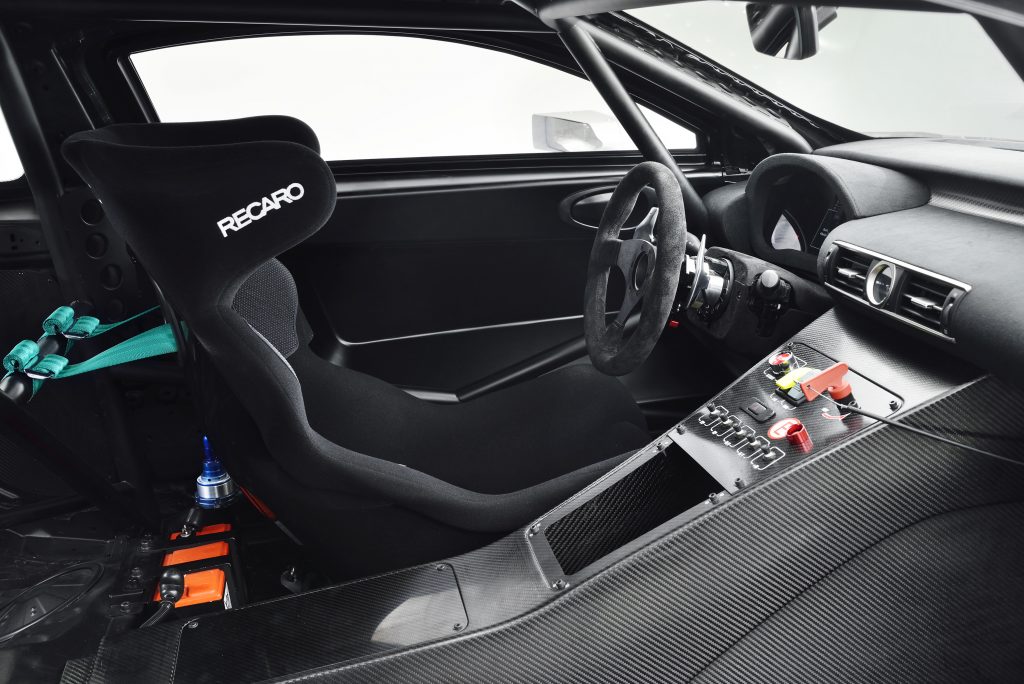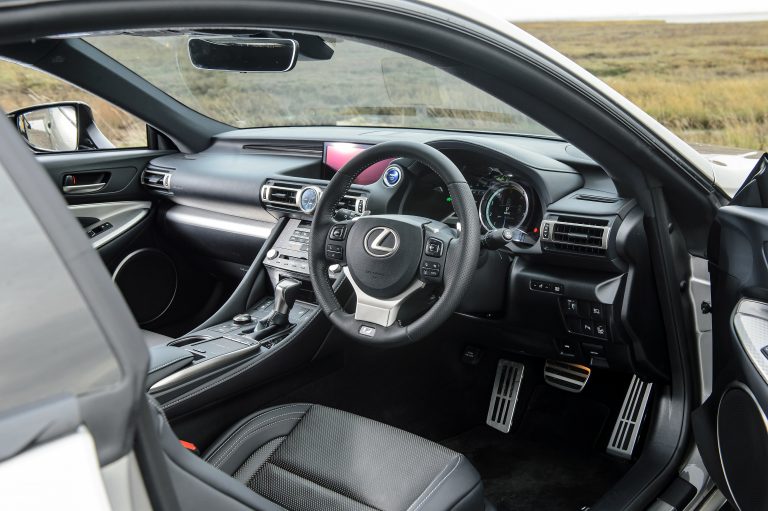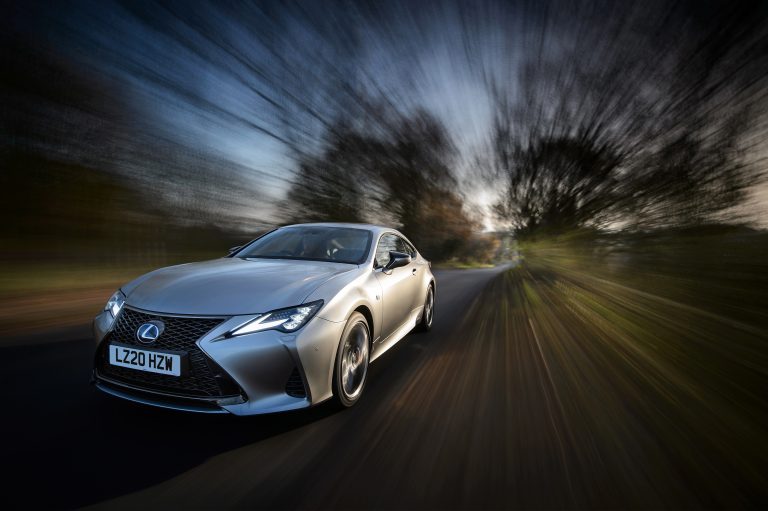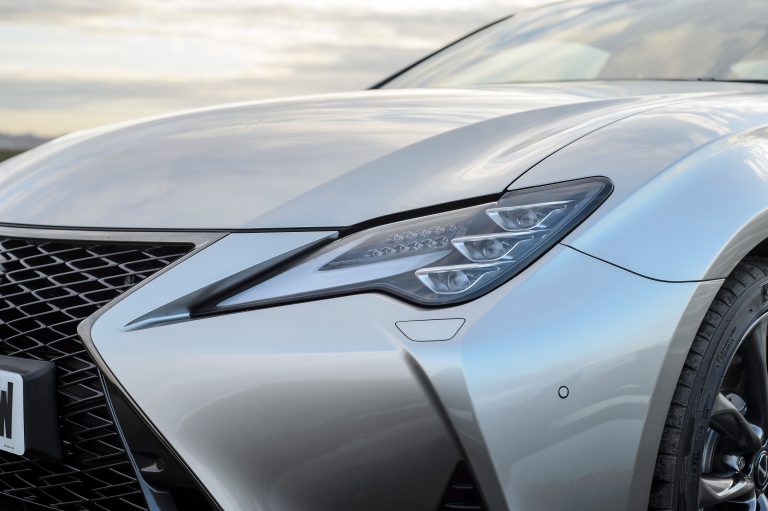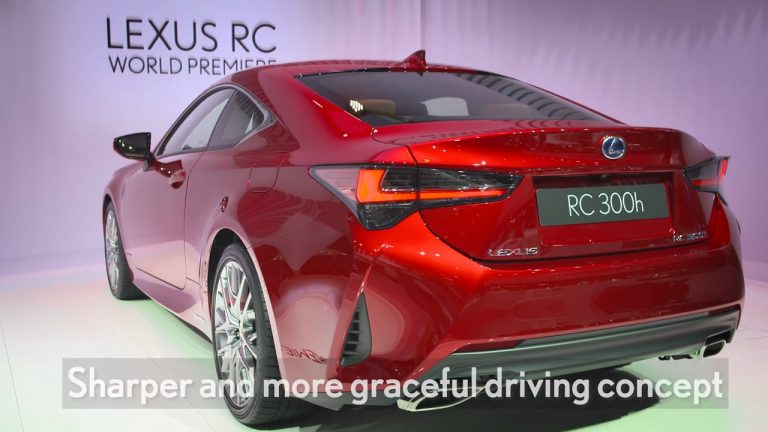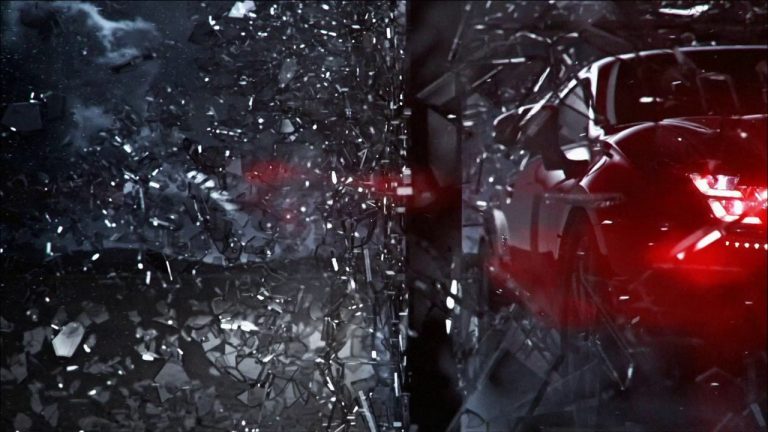Lexus at Geneva Motor Show 2014
- RC coupe appears in Europe for the first time at the 2014 Geneva motor show
- World Premiere of RC F GT3 concept at the 2014 Geneva motor show signals Lexus’ intent to support GT3 sports car racing in 2015
- RC F equipped with Lexus’ most powerful V8 engine to date, generating in excess of 450bhp
LEXUS UNLEASHES RC F SPORT
- RC coupe appears in Europe for the first time at the 2014 Geneva motor show
- World premiere of the RC F Sport, with exclusive design features and dynamic upgrades
- RC 300h with 2.5L full hybrid powertrain confirmed for launch in Europe in 2015
- Full RC F Sport gallery here
Lexus will unveil its RC coupe for the first time in Europe at the 2014 Geneva motor show. Lexus has confirmed a 2015 launch for the car, which will be available with a 2.5-litre version of Lexus’ full hybrid drive system, named RC 300h.
First revealed at the 2013 Tokyo motor show, the RC is a stand-alone model, rather than a two-door derivative of a sedan. Based on the GS platform, it differs in all dimensions from the GS and IS model lines.
The new RC model range features the latest Lexus advanced technology developments, including a new, touch-operated Remote Touch Interface (RTI), and an upgraded Blind Spot Monitor (BSM) safety system.
The new RC model range aims to raise Lexus’ profile with a broader audience. The purity of its design and its engaging driving experience inject even more emotional appeal into a Lexus DNA already renowned for build quality, refinement and reliability.
New F Sport Model
The RC 300h F Sport, shown for the first time at Geneva, will feature aggressive exterior and interior design features, and enhanced driving dynamics, distinguishing it from other trim levels in the range.
F Sport’s dynamic upgrades take the form of tuned front and rear suspension systems and the availability of Adaptive Variable Suspension (AVS) with the Sport S+ driving mode.
Exterior Design
Lexus designers have endowed the RC with deeply contoured lines and crafted the widest and lowest-set interpretation yet of the Lexus spindle grille. In terms of size, it occupies a unique position in the Lexus range, measuring 30mm wider, 35mm lower and 70mm shorter in the wheelbase than the IS saloon, giving it a classic coupe stance.
Triangular headlamps capture the sporty characteristics of the earlier LF-LC concept, along with the novel three-lamp LED configuration that was part of the show car’s design. Both front and rear lighting units use the Lexus L design motif.
The RC can be specified with two alloy wheel designs: a deeply sculpted, 10-spoke 19-inch wheel and a muscular, five-spoke 18-inch version. Both are precision-machined and finished with elegant black and platinum caps. RC F Sport benefits from a unique 19″ alloy wheel design which features an outer machine-finished 10-spoke layer offset over an inner 10-spoke layer finished in a dark metallic paint.
The RC measures 4,695mm long, 1,840mm wide and 1,395mm high, with a 2,730mm wheelbase.
The design features a compact cabin contrasted by aggressively flared wings and body contours etched with deeply sweeping lines.
The RC will be available in a choice of 7 exterior colours, including a new Red which features an innovative painting process. The multi-layered process includes a silver base coat which gives the paint brighter highlights and darker shading for a deeper, richer finish. Three additional colours –White Nova, Orange and Blue- are exclusive to the F Sport model range.
Interior Design
The four-seat interior of the RC is strongly influenced by Lexus’ sports concepts, reflected in the extensive use of contrasting colours, materials and lighting. The purpose-designed lighting package gives a sense of occasion, with illumination that reflects upwards rather than down to envelop the cabin.
The high-contrast interior colours emphasise the elegant lines around the interior, together with shimamoku highlights – a genuine wood finish created using an intense layering technique refined by Lexus.
The driver’s cockpit follows the established Lexus design principle of an upper display zone and lower operation zone. The upper zone houses the instrument panel and seven-inch navigation screen; lower down the layered centre console integrates the Remote Touch Interface controller.
The seats are made using an integrated foaming construction, similar to the moulding technique used for racing seats, to provide excellent comfort and support.
F Sport models are distinguished by a driver’s meter with a moving centre ring, similar to those in the IS 300h F Sport and LFA models. The F Sport steering wheel and shift knob are both finished in perforated leather. The cabin is finished with wedge metal ornamentation using thinly machined metal sections with a precision, 3D surface treatment.
The interior may be finished in a total of five, high-brightness and high-contrast colour schemes, including a newly developed Clove, which accentuates the sporting elegance of the cabin, and a dark rose finish, unique to F Sport.
Driving Dynamics
The RC’s strong and purpose-built chassis represents the latest stage in Lexus’ mission to deliver a world-class driving experience, building on the advances made with both the latest GS and IS models.
Extra-thick underbody rocker panels greatly increase the car’s rigidity and enhance its driving performance. Lexus has also used new manufacturing techniques it pioneered in the LS and IS models, including the use of innovative body adhesives, to strengthen the chassis.
Aerodynamic aids, especially those featured on the RC’s underbody also contribute to the handling package. The suspension design features front double wishbones and a multilink system at the rear.
An Adaptive Variable Suspension (AVS) system is available with F Sport trim. The system allows the driver to fine tune ride characteristics with a choice of two damper settings; Normal, for everyday driving comfort, and Sport, for improved body control and precise responses to steering input while cornering. In response to driving operation, vehicle body motion and road surface conditions, AVS automatically adjusts the performance of the suspension and shock absorbers at all four wheels to further reduce vehicle roll through corners.
Powertrain
The RC 300h combines a 2.5 litre, dual-injection 4-cylinder petrol engine generating 176 bhp/131 kW at 6,000rpm and peak torque of 221 Nm between 4,200 and 4,800rpm with a 141bhp/105kW electric motor, delivering maximum system power of 217 bhp/162kW.
The hybrid system’s electronic continuously variable transmission features a six step, sequential shiftmatic manual override gear change. This configuration delivers all the driving engagement expected of a sporting coupe, combined with excellent fuel economy that is associated with Lexus Hybrid Drive.
Advanced Technologies
A new, touch-sensitive Lexus Remote Touch Interface (RTI) multi-function control device offers the driver simple, fast and intuitive multimedia system operation. Simply moving a finger over the panel’s surface moves the cursor, and pressing down on it enters the selection.
An upgraded Lexus Blind Spot Monitor (BSM) system detects vehicles that are approaching the rear of the car at a higher speed and from a greater distance. When the BSM system detects other vehicles travelling behind the RC, an indicator light in the corresponding door mirror alerts the driver to the presence of such a vehicle.
TECHNICAL SPECIFICATIONS
| Engine type |
2AR-FSE |
| Cylinders |
4 in line |
| Max. power (bhp/kW) |
176/131 @ 6000rpm |
| Max. torque (Nm) |
221 @ 4200-4800rpm |
| Total system output (bhp/kW) |
217/162 @ 6,000rpm |
| Transmission |
E-CVT |
| Driven wheels |
Rear-wheel drive |
| Seating capacity |
4 |
| Overall length (mm) |
4,695 |
| Overall width (mm) |
1,840 |
| Overall height (mm) |
1,395 |
| Wheelbase (mm) |
2,730 |
| Suspension |
Front : Double Wishbone Rear : Multilink |
RC F: THE MOST POWERFUL LEXUS V8 PERFORMANCE CAR YET
- RC F equipped with Lexus’ most powerful V8 engine to date, generating in excess of 450bhp
- World-first use of a Torque Vectoring Differential in a front engine/rear-wheel drive sports car
- Powerful exterior styling, incorporating advanced, race-bred aerodynamics
- Bespoke interior with RC F-dedicated instrumentation, seats and finishes
- Debut at the North American International Auto Show on the 25th anniversary of the launch of the Lexus brand
- Full RC F gallery here
The high-performance Lexus RC F makes its European debut at the 2014 Geneva motor show, ahead of its launch in late 2014.
The great visual impact of the RC F is matched by the impressive power of its new 5.0-litre engine. Generating well in excess of 450bhp, it makes the RC F the most powerful V8 performance model Lexus has yet produced.
To harness the engine’s potential with the best possible efficiency, the RC F uses a newly calibrated eight-speed transmission and, in a world first for a front engine/rear-wheel drive car, a Torque Vectoring Differential to secure higher levels of traction and vehicle control.
Yukihiko Yaguchi, RC F Chief Engineer, said: “I’ve built the RC F to be enjoyed by all enthusiasts, no matter what their level of expertise. There’s a false perception that racing cars are hard o drive. In fact, they’re easy in the right hands because they’ve been purpose-built for the skill level of their drivers. It’s the same with the RC F. Electronics can be modified instantly on board to provide appropriate levels of performance and protection. But even at its basic setting, it’s a blast!”
All-new High Performance Engine
At the heart of the new RC F is a 5.0-litre 32-valve engine developing more than 450bhp and 520Nm of torque. Its cylinder heads and all moving parts have been newly designed to deliver more power at higher engine revs than has previously been possible.
It is also the first Lexus performance engine to use the Atkinson cycle at cruising speeds, to secure better fuel economy, switching to the Otto cycle at higher revs to achieve impressive levels of performance.
The engine has been developed exclusively for the RC F and every aspect of the powertrain has been designed to deliver the highest possible driver engagement, including the transmission and exhaust system.
The specially calibrated eight-speed Sports Direct Shift transmission improves linear response to accelerator pedal inputs, giving the driver more precise control of power and torque delivery.
The RC F driving experience is further heightened by a new system that regulates induction and exhaust sound, creating a deep tone up to 3,000rpm, and a higher-pitched note as revs rise beyond 6,000rpm under hard acceleration.
Torque Vectoring Differential
The RC F marks a world-first for a front engine/rear-wheel drive car with its use of a Torque Vectoring Differential. Designed to raise driving enjoyment by increasing traction and control, the system has three operating modes: –
- Standard, for a balance of agile performance and high-speed stability
- Slalom, for an emphasis on nimble response to steering inputs
- Track, for consistent, stable cornering in circuit driving, with optimum driver control. The RC F also has a recalibrated Vehicle Dynamics Integrated Management system with an additional vertical G-force sensor to secure even greater vehicle stability.
Driving Dynamics
The foundation of the new RC F’s outstanding mechanical grip is its highly rigid body, featuring large cross-section rocker panels and front lower brace. Lexus has deployed numerous specialist manufacturing techniques to further enhance rigidity, including the use of body adhesives, laser-screw welding and multi-spot welding. A wider tyre and wheel assembly help to raise grip performance.
Independent, coil-sprung suspension is used front and rear, incorporating monotube gas dampers and ball-jointed anti-roll bars. The car’s unsprung weight has been kept down by using 19-inch forged aluminium alloy wheels, which minimise wheel assembly mass while at the same time improving rigidity.
As in the Lexus LFA supercar, the RC F is fitted with an active rear wing, Incorporated in the bootlid, this provides additional downforce at speeds above 50mph. The rear wing is a highlight of the RC F’s comprehensive aerodynamic grip and stability package, which also includes tuning of the flat underbody, race-bred air management ducts behind the front bumpers and wings, and strategic placement of aero stabilising fins.
F performance styling
The RC F is immediately distinguishable from the RC coupe thanks to its more powerful visual impact.
It features its own interpretation of the Lexus signature spindle grille, which dominates the front of the vehicle and has a subtle ‘F’ motif embedded in the mesh below the Lexus badge.
The front of the bonnet is set higher than on the RC, creating a powerful, flared profile that’s in keeping with its status as a Lexus F model. The profile view is rendered more striking by the 10-spoke 19-inch forged aluminium wheels, three versions of which will be available, including one that’s hand-polished by craftsmen.
The design takes some cues from the LFA, most notably in the use of essential air cooling and aerodynamic features. Air outlets on the bonnet, like those on the LFA, work together with front cooling ducts to support both engine cooling and overall vehicle stability.
To the side there are air outlets behind the front wings that add to the engine and brake cooling performance, and which merge neatly with side sill extensions to create a powerful ‘L’ shape.
The powerful look continues at the rear of the car, with stacked, quad trapezoidal exhaust outlets.
Lightweight carbon fibre package
Lexus drew on the experience it gained with the LFA and the IS F CCS-R race car to develop a package of carbon fibre parts that help keep the RC F’s weight to a minimum. The carbon fibre elements include the roof, bonnet and active rear wing.
Interior design
The RC F’s interior is driver focused and equipped with numerous components specific to the model, including the instrument meters, steering wheel, seats, pedals and trim, all designed to deliver the kind of comfort, support and ergonomics expected of a high-performance Lexus F model.
The instrument meters mark a further development of the switchable, diving mode-dependent central dial featured in the LFA. The design is inspired by aircraft cockpit instrumentation, providing a wide range of information in a clear, concise form that can be read at a glance.
The instrumentation includes a large, centrally mounted tachometer which changes according to driving mode; digital and analogue speed read-outs; a differential torque vectoring monitor; a G-force meter; oil and coolant temperature gauges; mileage information; and a stopwatch.
Lexus has also worked to provide an ergonomically ideal driver-machine interface. The RC F marks Lexus’ first use of a thick-grip steering wheel with an elliptical cross-section, design to provide greater control during performance driving. The location, shape and action of the paddle shifts have also been carefully determined to enable fast, accurate gear changes at all times.
The seat designs, with styling influenced by modern close-fitting sportswear, feature high backs that use Lexus’ integrated foaming technique to provide excellent support, eliminating any movement between the seat padding and trim.
Lexus RC F Preliminary Technical Specification
| Engine capacity (l) and configuration |
5.0 V8 |
| Max. power (bhp/kW) |
˃450/335 |
| Max. torque (Nm) |
˃520 |
| Transmission |
8-speed Sports Direct Shift, intelligent electronically controlled automatic |
| Driven wheels |
Rear-wheel drive |
| Seating capacity |
4 |
| Overall length (mm) |
4,705 |
| Overall width (mm) |
1,850 |
| Overall height (mm) |
1,390 |
| Wheelbase (mm) |
2,730 |
| Kerb weight (kg) |
˂1,800 (target) |
| Brakes |
Power-assisted Brembo discs |
| Wheels |
Front – 19 x 9J Rear – 19 x 10J |
| Tyres |
Front – 255/35R19 Rear – 275/35R19 |
| 0-62 mph |
Faster than IS F |
| Estimated top speed (mph) |
168 (electronically limited) |
| Estimated fuel consumption |
Better than IS F |
WORLD PREMIERE OF RC F GT3 CONCEPT AT GENEVA
LEXUS TO SUPPORT GT3 RACING IN 2015
- World Premiere of RC F GT3 concept at the 2014 Geneva motor show signals Lexus’ intent to support GT3 sports car racing in 2015
- Wider and lower than standard RC F road car, weighing just 1,250 kg
- Modified RC F V8 developing some 540 DIN hp
- Full RC F GT3 gallery here
The World premiere of the new RCF GT3 concept at the 2014 Geneva motor show signals Lexus’ intent to support GT3 sports car racing in 2015.
Jointly developed by Lexus International and its subsidiary Techno Craft, and built by the latter in Japan, the RC F GT3 concept is based on the new RC F coupe, the most powerful V8 performance car yet developed by Lexus.
4705mm long, 2000mm wide, 1270mm high and with a wheelbase of 2730mm, the RC F GT3 concept is wider and lower that the standard RC F, yet, with the interior stripped to racing specification, weighs just 1,250kg.
A modified version of the RC F’s V8 engine develops some 532bhp.
The launch of the RC F GT3 concept marks the start of a long-term commitment to GT3 racing by Lexus. Testing will begin this year, with a view to supporting sports car racing teams participating in 2015 GT3 racing categories.

